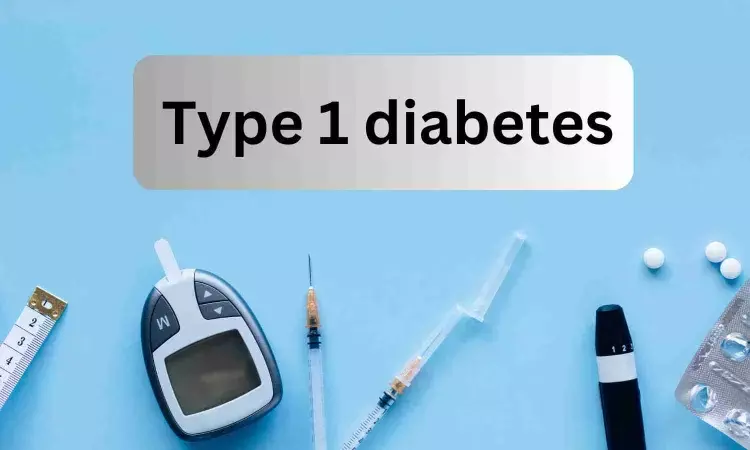- Home
- Medical news & Guidelines
- Anesthesiology
- Cardiology and CTVS
- Critical Care
- Dentistry
- Dermatology
- Diabetes and Endocrinology
- ENT
- Gastroenterology
- Medicine
- Nephrology
- Neurology
- Obstretics-Gynaecology
- Oncology
- Ophthalmology
- Orthopaedics
- Pediatrics-Neonatology
- Psychiatry
- Pulmonology
- Radiology
- Surgery
- Urology
- Laboratory Medicine
- Diet
- Nursing
- Paramedical
- Physiotherapy
- Health news
- Fact Check
- Bone Health Fact Check
- Brain Health Fact Check
- Cancer Related Fact Check
- Child Care Fact Check
- Dental and oral health fact check
- Diabetes and metabolic health fact check
- Diet and Nutrition Fact Check
- Eye and ENT Care Fact Check
- Fitness fact check
- Gut health fact check
- Heart health fact check
- Kidney health fact check
- Medical education fact check
- Men's health fact check
- Respiratory fact check
- Skin and hair care fact check
- Vaccine and Immunization fact check
- Women's health fact check
- AYUSH
- State News
- Andaman and Nicobar Islands
- Andhra Pradesh
- Arunachal Pradesh
- Assam
- Bihar
- Chandigarh
- Chattisgarh
- Dadra and Nagar Haveli
- Daman and Diu
- Delhi
- Goa
- Gujarat
- Haryana
- Himachal Pradesh
- Jammu & Kashmir
- Jharkhand
- Karnataka
- Kerala
- Ladakh
- Lakshadweep
- Madhya Pradesh
- Maharashtra
- Manipur
- Meghalaya
- Mizoram
- Nagaland
- Odisha
- Puducherry
- Punjab
- Rajasthan
- Sikkim
- Tamil Nadu
- Telangana
- Tripura
- Uttar Pradesh
- Uttrakhand
- West Bengal
- Medical Education
- Industry
Trajectory of type 1 diabetes risk shifts after age 10 years between at-risk males and females: Study

New research presented at this year's Annual Meeting of the European Association for Study of Diabetes (Madrid, Spain, 9-13 September) shows that the risk of developing type 1 diabetes (T1D) decreases markedly in girls after age 10 years, while the risk in boys stays the same.
Furthermore, risk of T1D is significantly higher boys with a single autoantibody than their female counterparts, suggesting the sex could be linked with autoantibody development, indicating the importance of incorporating sex in the assessment of risk. The study is by Erin L. Templeman and Dr Richard Oram, University of Exeter Medical School, Exeter, UK, and colleagues.
Autoantibodies (ABs) are proteins produced by the body’s immune system, which attack other proteins in autoimmune diseases including T1D.
In contrast to most autoimmune diseases, male sex is a risk factor for type 1 diabetes (T1D). This raises the hypothesis that either immune, metabolic, or other differences between sexes may impact risk or progression through stages of T1D. In this study, the authors aimed to assess the risk and rate of progression for individuals in the TrialNet Pathway to Prevention study that screens relatives of people with T1D for the presence of autoantibodies.
The authors studied 235,765 relatives of people with T1D. They used computer and statistical modelling to calculate risk of T1D, stated as estimated 5-year risk for females and males respectively, after adjusting for confounders.
The proportion of individuals who screened positive for ABs was higher in males (females: 5.0% males: 5.4%). Of these individuals, males were more likely to screen positive for multiple ABs (females: 1.8%, males: 2.6%). Absolute 5-year risk of progression to T1D in single AB positive individuals was significantly higher (in males (females: 14%, males: 21%).
However similar risk was displayed across sexes when presenting with stage 1 (at least 2 ABs) (females: 38%, males: 38%) or stage 2 (AB and abnormal blood sugar stability) (females: 57%, males: 59%). Risk remains significantly higher in single AB positive males when adjusting for the presence of a first-degree relative with T1D and age (27% higher risk in single AB positive males compared to single AB positive females).
A large decrease in 5-year T1D risk is displayed in females when screened, and autoantibody positive, after 10 years old as compared to before aged 10 years old (see fig. 1 of abstract). In contrast, a steady decline in 5-year T1D risk is displayed in males as age at screening increases.
The authors conclude: “The risk of T1D is significantly higher in males than females when presenting with a single autoantibody. Risk is similar between males and females in childhood, with the risk diverging at age 10. Risk in females then dramatically decreases, whereas risk is sustained in males. This suggests sex appears to be linked with autoantibody development, indicating the importance of incorporating sex in the assessment of risk.”
On the difference in risk between boys and girls, the authors add: “We don’t know and this is an interesting area where more research is needed. The change in risk at around the age of 10 raises the hypothesis that puberty related hormones may play a role.”
They add: “We found the biggest differences in risk of T1D in individuals who had not progressed to stage 1 T1D, with a similar rate and risk of progression in those who were stage 1 and stage 2 T1D. Therefore, it seems most likely that explaining the mechanism of sex differences may help us understand underlying pathogenesis of T1D and potential intervention targets, more than affecting how we screen, diagnose and intervene.”
Reference:
Trajectory of type 1 diabetes risk shifts after age 10 years between at-risk males and females, European Association for the Study of Obesity, Meeting: Annual Meeting of the European Association for the Study of Diabetes (EASD).
Dr Kamal Kant Kohli-MBBS, DTCD- a chest specialist with more than 30 years of practice and a flair for writing clinical articles, Dr Kamal Kant Kohli joined Medical Dialogues as a Chief Editor of Medical News. Besides writing articles, as an editor, he proofreads and verifies all the medical content published on Medical Dialogues including those coming from journals, studies,medical conferences,guidelines etc. Email: drkohli@medicaldialogues.in. Contact no. 011-43720751


